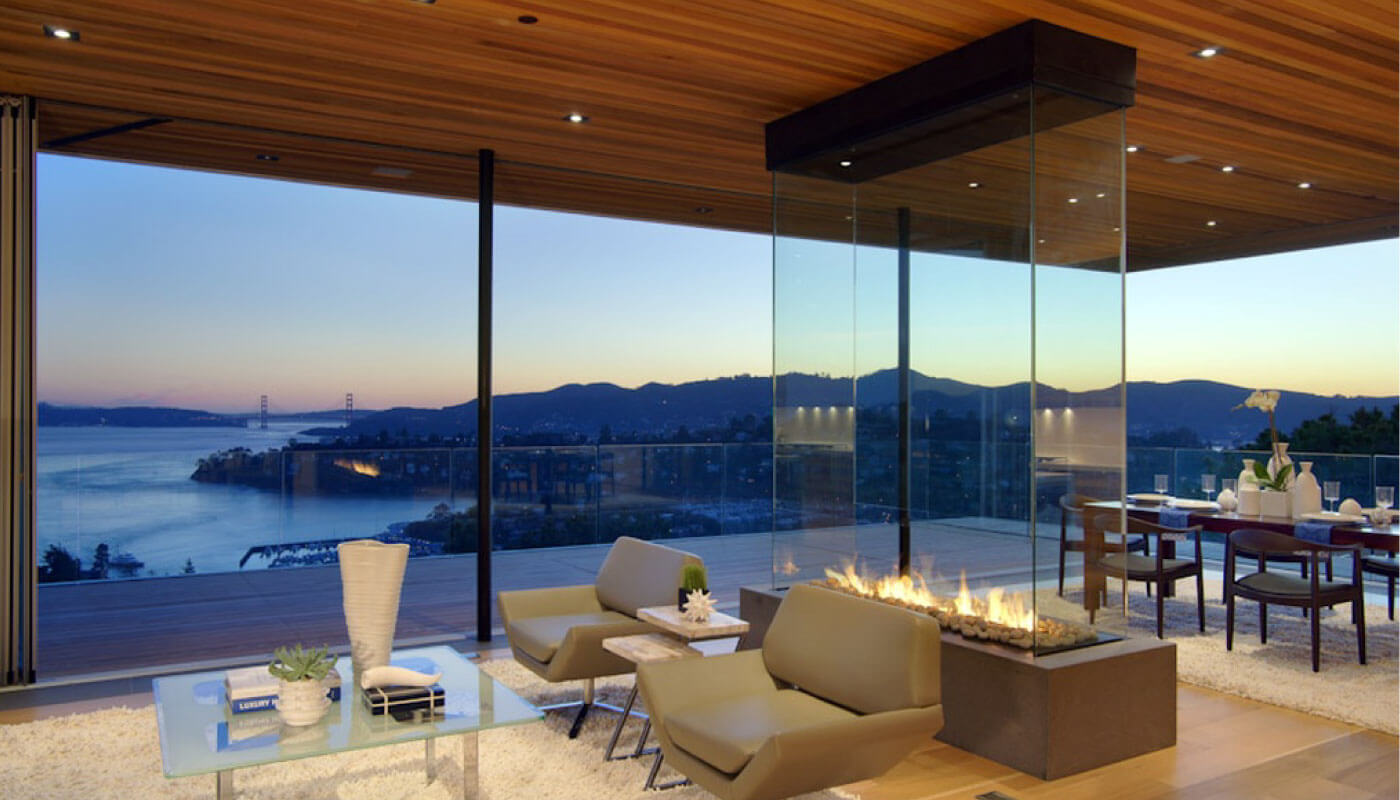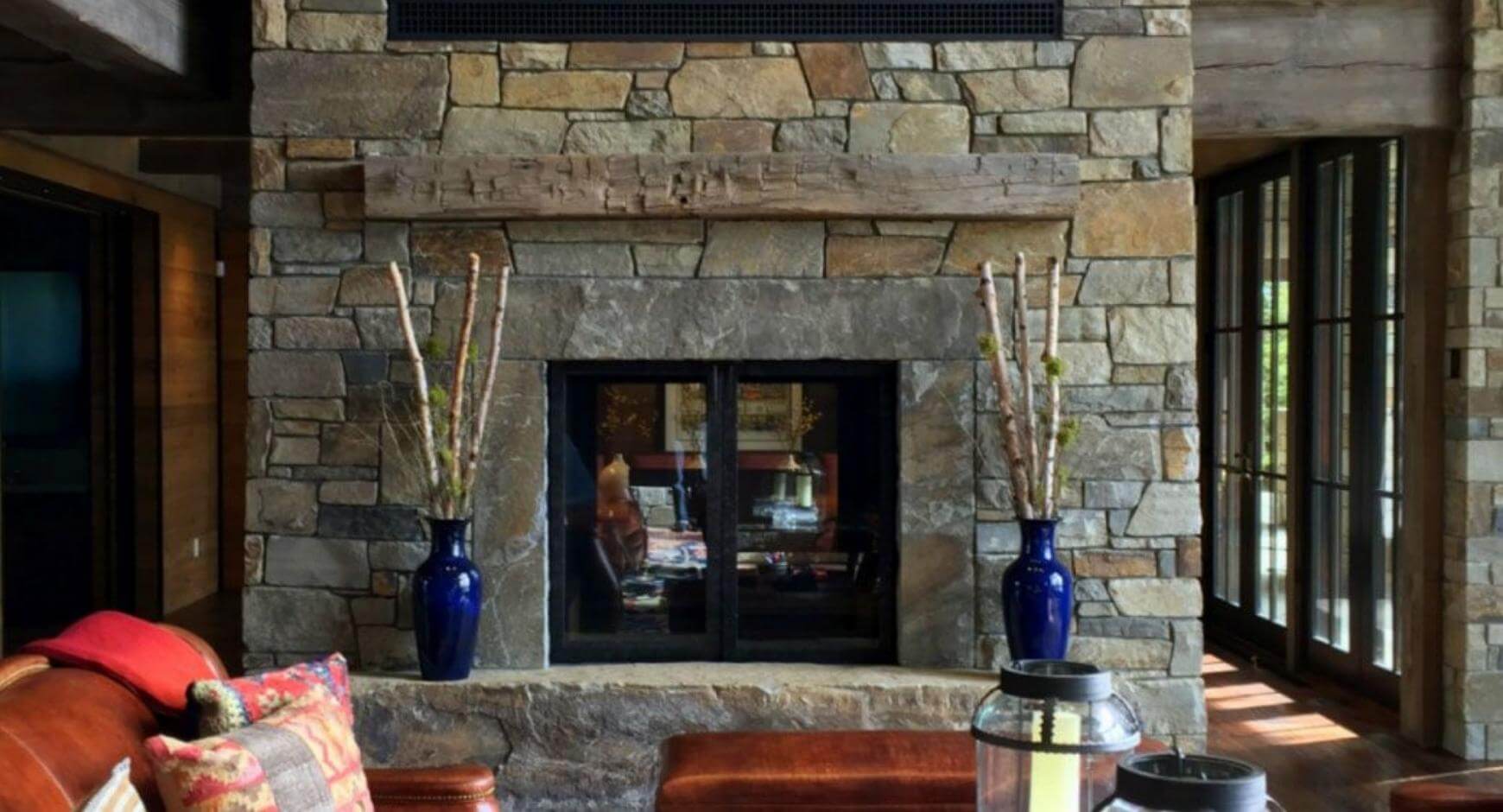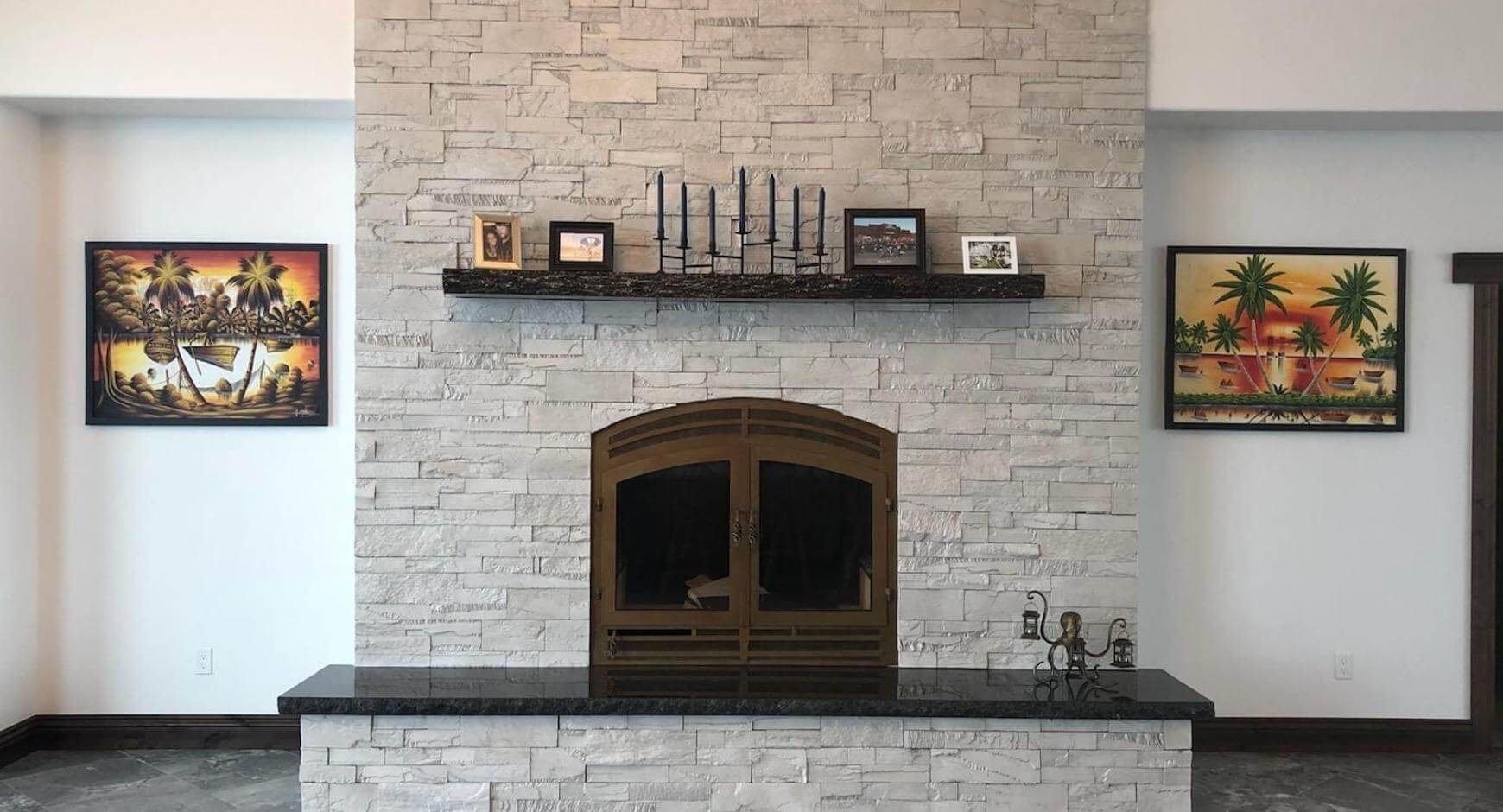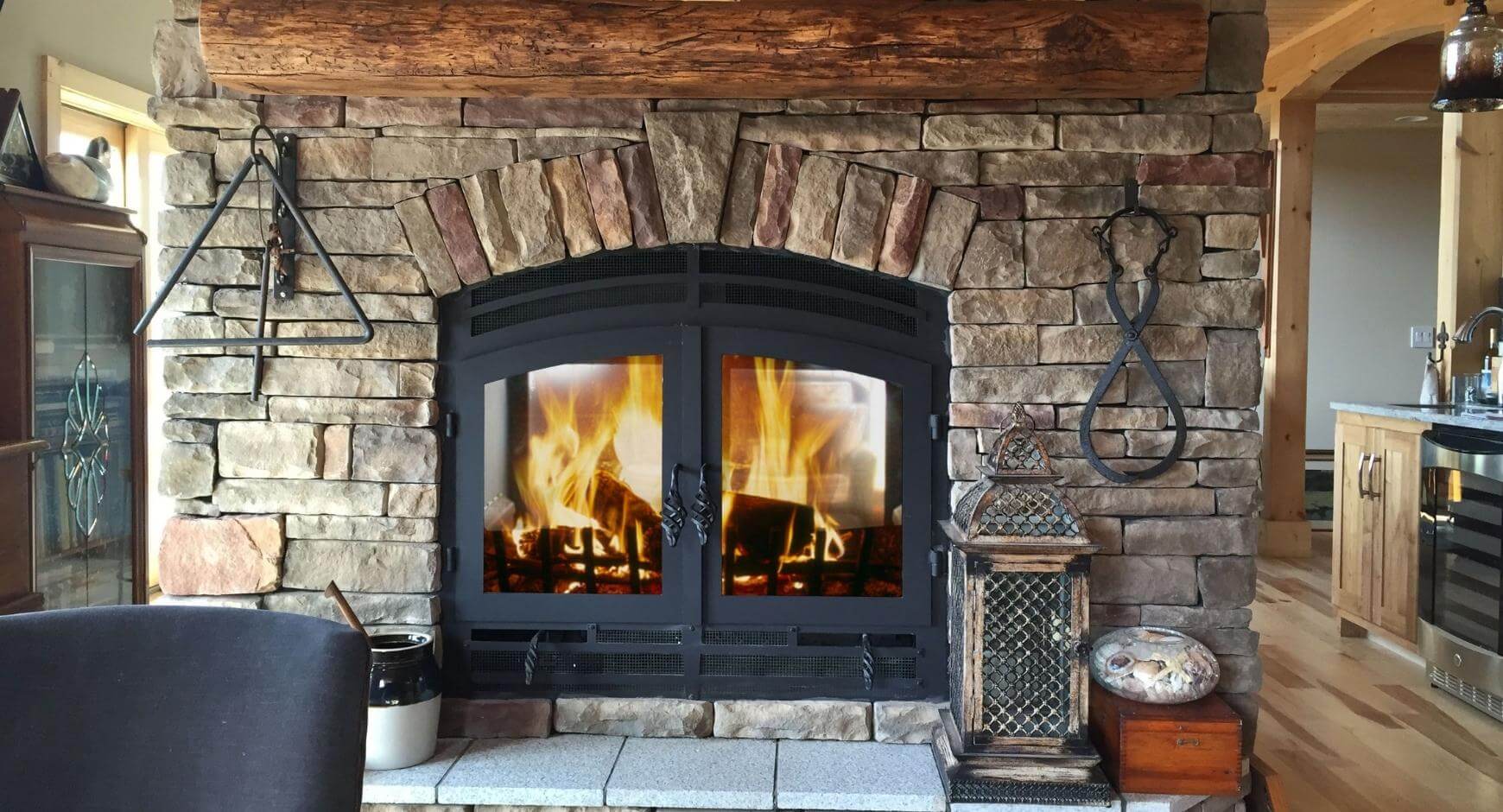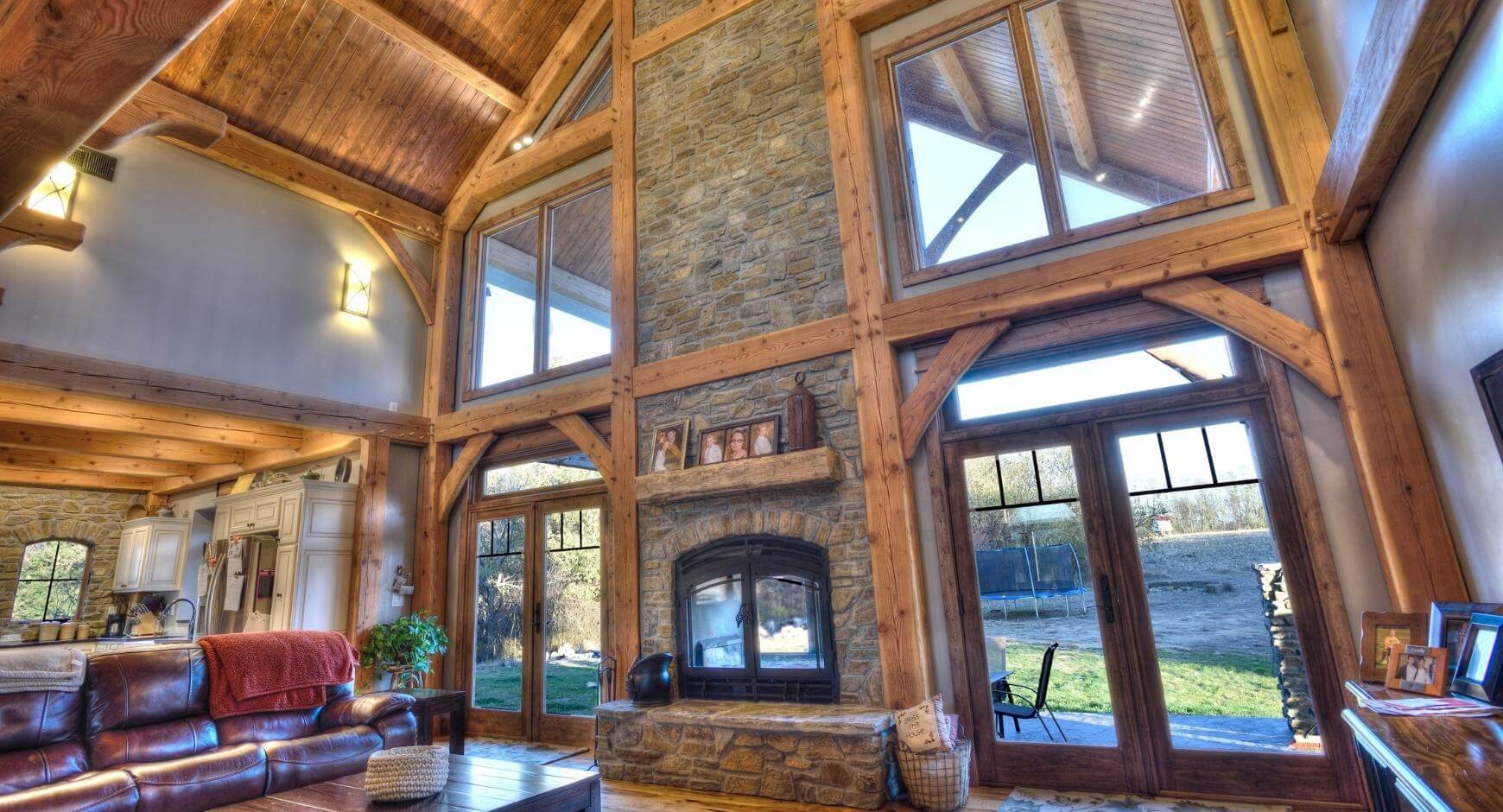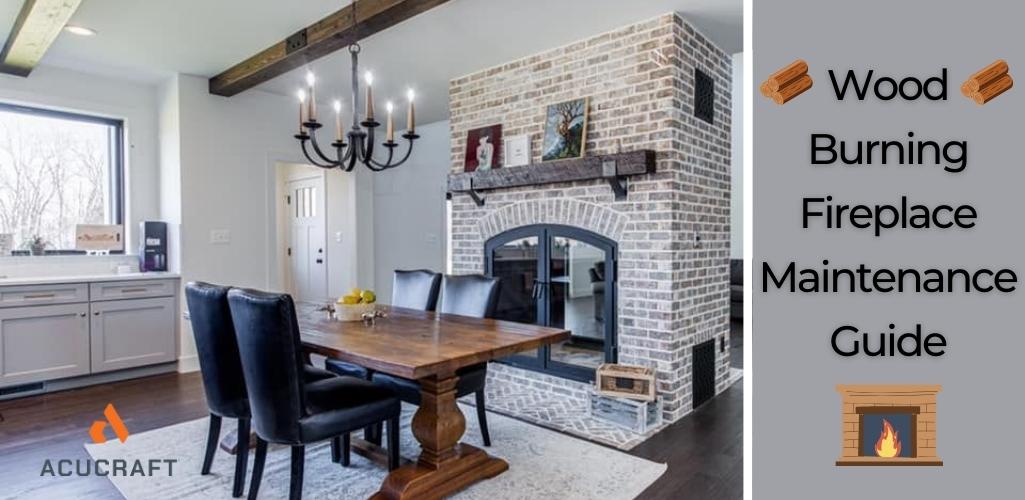
Routine fireplace maintenance is essential to the longevity and safety of your fireplace, particularly if you are burning real wood logs. Use our wood-burning fireplace maintenance guide to keep yours in top shape year-round. We’ve broken down all of the essential tasks and added our own expert tips to give you a comprehensive resource for proper fireplace maintenance.
You may have come here with questions like, “How often should you clean a chimney?” or, “What is the best way to start a fire in a fireplace?” Since Acucraft has been engineering, designing, and building wood-burning fireplaces for over 40 years, we’ve got the answers you need. With this wood-burning fireplace maintenance checklist, we’re hoping to answer all your questions so you can get back to relaxing by the fire.
For more information on fireplace design and care, contact the fire experts at Acucraft for a free consultation.
How Important is Proper Wood Fireplace Maintenance?
Maintaining and caring for your wood-burning fireplace will ensure your fireplace provides you with a lifetime of enjoyment. Although our wood-burning fireplaces are designed to keep themselves relatively clean, we do recommend annual maintenance.
The most important item on your annual checklist should be to schedule a flue inspection and chimney cleaning to prevent the build-up of creosote that could cause a chimney fire. Equally important is regularly testing your carbon monoxide and smoke detectors. Completing these critical tasks will ensure your fireplace safety all year long.
- Prevent the build-up of creosote in the flue
- Inspect your carbon monoxide and smoke detectors
- Keep your fireplace clear of debris
Essential Fireplace Maintenance Tasks
Wood fireplace cleaning is usually as simple as scooping out your ashes, but once a year you need to deep dive and thoroughly clean the chimney and flue. Knowing how to clean a wood burning fireplace takes some skill, and will certainly be a messy job. That’s why we recommend hiring a professional, so you can have the peace of mind knowing the job was done right.
Schedule a Flue Inspection
A flue inspection should be completed each year to ensure the proper removal of any creosote build-up. Creosote can accumulate if you’re burning soft, green, or wet wood or using newspaper as a fire starter. We strongly recommend using a wax or sawdust fire starter and dry kindling.
Creosote build-up can be hard to spot in the dark corners of your chimney, so hiring a professional is the best way to safeguard against chimney fires. If you’re using your fireplace regularly, we also suggest using a creosote spray periodically. Annual flue inspections are a must for fireplace maintenance and come with many benefits:
- Professional quality fireplace care
- Ensures proper air flow & drafting
- Expert advice on wood for your fireplace
Hire Someone to Clean Your Chimney
Chimney sweeps may conjure up old memories of Mary Poppins characters, but they are still vital to our home maintenance. Your annual flue inspection will determine if you need to hire someone to clean your chimney. It’s a messy job best left to the professionals, as the improper removal of creosote can lead to chimney fires.
Today’s chimney sweeps know the best way to clean a fireplace without making a mess of your space. They use a comprehensive chimney inspection checklist to keep your fireplace operating safely throughout the fall and winter months. Professional fireplace care comes with several benefits:
- Mess-free fireplace maintenance
- Quality, quick, and easy service
- Bonus chimney maintenance tips
Clean Around Your Fireplace
The same soot and creosote in your chimney can also build up in your fireplace and on your fireplace doors. These areas are much easier to reach, so this is one maintenance task you can do yourself. The buildup should be removed at least once a year or once a season if you use your fireplace frequently. The benefits are seen immediately with clear views through the glass fireplace doors of your freshly cleaned fireplace.
- Remove soot from the exterior
- Clean your fireplace doors
- Maintain your ash level at 1 inch
Double-Check Your Carbon Monoxide Detectors and Smoke Alarms
Wood-burning fireplaces can be an enjoyable source of warmth and conversation, but they can be equally hazardous if not treated with care. A blocked chimney flue can cause carbon monoxide from a wood-burning fireplace to escape into your home. Since it is a colorless, odorless gas, a carbon monoxide detector is the only way to identify it. Stay on the safe side and double-check your carbon monoxide detectors and smoke alarms on a routine schedule.
- Properly installed fireplaces won’t ring any alarms
- Double-checking your detectors ensures safe usage
- Alarms will notify you of potential carbon monoxide risks in your home
Wood Burning Fireplace Tips
There is no shortage of helpful tips for wood-burning fireplaces out there. After a few millennia of use, people have developed strong opinions on the best wood for fireplaces, how to keep a fire going in a fireplace, and an assortment of other valuable advice.
- Use the Best Burning Wood for Your Fireplace: The wood quality is essential for an efficient wood fire. Good burning wood for a fireplace needs to be cut, split to less than six inches in diameter, and stored in a dry location until the moisture content is between 18-and 22%.
- Don’t Leave Your Fire Burning Nonstop: An important rule that most people learn at a young age is never to leave a fire unattended. A slight breeze or shifting log could send sparks flying onto your carpet or furniture, catching and spreading the flames.
- Keep Fireplace Tools on Hand: A fire poker is ideal for adjusting logs without getting too close to the flames. You should also have a metal shovel and broom for removing the ash and disposing of any remaining coals after a fire.
- Don’t Clean Up Ashes With a Vacuum: Ash could be hiding tiny embers that will melt away your vacuum’s interior. We recommend a metal shovel and bucket for ash removal. Also, if you want to build a fire with a longer burn time, we recommend maintaining a 1″ layer of ash at the bottom. It will help slow the burn rate of your fire by providing the elevation needed for the logs to breathe while still insulating your coals.
Wood Burning Fireplace FAQ
Whether you’re new to wood-burning fireplaces or simply trying to burn wood more efficiently, you’ve likely come here with a few questions. We’ve put together our customers’ most frequently asked questions to help you along the process. From the best way to start a fire in a fireplace to what to burn in a fireplace besides wood, we will give you our most helpful tips.
How to Light a Fireplace With Wood
The best way to start a fire in a fireplace is with a wax or sawdust fire starter and dry kindling. Using newspaper and/or garbage to start a fire will add to the levels of creosote in your chimney. This will not only inhibit the flow of smoke from your fire but could eventually lead to a chimney fire if left for too long.
How to Put a Fire Out in a Fireplace
If you’re ready for bed and don’t want to wait for the fire to die out slowly, there are a few simple steps you can take to put it out safely:
- Gently spread the remaining wood and embers into a flattened mound so that it dies out quickly
- Once some of that has turned to ash, shovel the ash to cover the remaining cooling wood and embers. Repeat this until the flames are completely extinguished.
- After you’ve double-checked that the fire is out and there are no small embers around, cover the wood with a thin layer of baking soda. Baking soda contains sodium bicarbonate, which is also an ingredient used in fire extinguishers.
What Wood is Good for a Fireplace?
Burning dry wood will maximize your heat output, keep your glass clean, and produce less creosote buildup. The type of wood you burn in your fireplace also impacts your heat output. Dry hardwood, such as oak or maple, is some of the best wood for a fireplace.
How Can I Make My Wood Burning Fireplace More Efficient?
Did you know that the temperature of the air outside can affect your wood-burning fire and chimney drafting? When outside air is over 45°F, your fireplace may struggle to draft correctly.
We recommend having your combustion air control 100% open when the temperature outside is over 45°F and setting your combustion air control to 50% in colder months when the temperature dips below 45°F. These modifications will help provide the proper airflow to your fireplace and help keep your fireplace glass doors cleaner.
Explore the Acucraft Blog For More Hot Tips
Fireplace maintenance is an integral part of keeping your dream wood fireplace burning for years to come. At Acucraft, our custom fireplace options, like gas conversions and double-sided fireplaces, make it easy to keep your fireplace in top shape year-round. If you’re still exploring the idea of a wood-burning fireplace, check out these cozy cabin fireplaces, or visit our image gallery for more inspiration. Browse additional ideas, tips, and advice for fireplace design and care in our blog.
